👇 Click play to watch or listen to this article on the new reference handbook for the CBT Electrical Power PE Exam:
On July 15th, 2020, NCEES® officially released the first version of the supplemental Reference Handbook for the new computer-based testing (CBT) format for the Electrical and Computer: Power PE Exam.
We read through all 75 pages of the brand new reference handbook to give you the best idea of what to expect for the new upcoming CBT format of the electrical power PE exam and what it means for anyone that will be taking the new CBT PE exam starting 2021.
If the questions on the CBT version of the electrical power PE exam are the same level of difficulty as the traditional paper and pencil (PP) format, then test takers are in for a very challenging adjustment if no major changes are made to the scoring process.
The reference handbook is the only supplemental reference material you will be allowed to use when you take the new electrical power CBT format PE exam. Besides the reference handbook, the CBT PE exam is closed book with no outside reference material permitted.
The schedule to transition the electrical power PE exam from the traditional paper and pencil format to the new computer-based testing (CBT) format moved ahead of schedule by four months. Originally scheduled for April 2021, the first CBT Electrical Power PE exam will be offered at the beginning of the year in January 2021.
After this date, the Electrical power PE exam will no longer be offered in the traditional open book paper and pencil (PP) format that has been around for decades.
What’s in this Article? Click below to jump to any section:
- The Reference Handbook for the new CBT Format Electrical Power PE Exam for January 2021 – Open vs Closed Book
- Reference Handbook Layout and Outline
- Biggest Surprise – Lack of Protection
- Second Biggest Surprise – Codes and Standards
- Engineering Economics
- Symmetrical Components
- Instantaneous Functions, Average Value, RMS
- Rotating Machines and Transformers
- Final Thoughts on the new CBT Reference Handbook for the Electrical Power PE Exam
- How to Login to NCEES® and Download or Print the CBT Reference Handbook for the Electrical Power PE Exam
- Useful Links and Additional Information Related to the New CBT Format for the Electrical Power PE Exam
- Questions, Thoughts, or Comments on the New NCEES® Reference Handbook for the CBT Electrical Power PE Exam?
1. The Reference Handbook for the new CBT Format Electrical Power PE Exam for January 2021 – Open vs Closed Book
The traditional paper and pencil PE exam format that has been in place for decades is open book. It allows test takers to bring in their own outside reference material to help answer questions on the PE exam.
Passing the paper and pencil format PE exam meant being tested on how well you can use references to answer new challenges, just like in the real world engineering industry you’re not expected to know every answer to every problem off the top of your head. That would of course be unrealistic. Instead, however, you are expected to be resourceful enough to quickly find answers to new challenges using textbooks, IEEE standards, codebooks, and case studies.
The average PE exam test taker would bring in anywhere from 10 to 15 different reference textbooks and three-ring binders filled with case studies, white papers, and explanatory material to help answer the more challenging questions that appear on the exam.
The majority of reference textbooks have been college-level academic books that are about 500 pages long and filled with diagrams, example problems, and theory explanations. They are a wealth of information and have proved to be invaluable over the years in passing the exam by being able to answer the last 5 to 10 questions in each section that are too difficult to be answered without supplemental reference material.
In contrast, the new CBT format of the electrical and power PE exam will be closed book, with only one allowed supplemental reference that will be supplied by NCEES®, which is the official Electrical and Computer: Power Reference Handbook.
If the official NCEES® reference handbook is the only allowed supplemental reference material for the new closed book CBT PE exam, how does it compare to the small library of 10 to 15 reference books that most test-takers have traditionally brought with them in the past to the open book paper and pencil PE exam?
Well to start, the reference handbook is only 75 pages long and made up mostly of just bare formulas with little explanation. The scope of the exam is just too large to be able to memorize every single detail being tested on. Compared to a small personal library of college-level engineering textbooks, it’s hard to imagine that everything needed to answer questions on the CBT PE exam is included in the reference handbook.
1. Conclusion – Open Book Paper and Pencil vs Closed Book CBT Format with Reference handbook:
The electrical power PE exam has always been notorious for including a handful of questions that are thought to be almost impossible to answer without the help of outside reference material. It’s hard to imagine that the new reference handbook will be any help at all in answering these types of questions. If question difficulty does not change on the CBT format, this will make the electrical power PE exam even more difficult than it already is.
2. Electrical Power CBT PE Exam Reference Handbook Layout and Outline
Outline Format – Exam Specifications vs Reference Handbook:
| Exam Specifications Outline | Reference Handbook Outline |
| I.A. Measurement and Instrumentation | 2.1 Measurement and Instrumentation |
| I.B. Applications | 2.2 Applications |
| I.B.7. Engineering Economics | 1.4 Engineering Economics |
| I.C. Codes and Standards | 2.3 Codes and Standards |
| II.A. Analysis | 3.1 Analysis |
| II.B. Devices and Power Electronic Circuits | 3.1 Devices and Power Electronic Circuits |
| III.A. Induction and Synchronous Machines | 4.1 Synchronous Machines |
| III.A. Induction and Synchronous Machines | 4.2 Induction Machines |
| III.B. Electric Power Devices | 4.3 Electric Power Devices |
| IV.A. Power System Analysis | 5.1 Power System Analysis |
| IV.B. Protection | NONE |
The table of contents including the layout and outline of the new NCEES® Reference Handbook for the Electrical Power PE Exam does not match the latest NCEES® Exam Specifications that were updated in 2018.
I’m not sure what the design intent was behind this, but it’s going to make using the reference handbook slightly more challenging when looking for specific topics based on the table of contents.
The two biggest differences are that engineering economics appears in Chapter 1: General Engineering instead of in Applications like it does in the exam specifications, and the subject of protection does not appear in it at all.
Strangely enough, the reference handbook also contains a large number of calculus derivative and integration identities in Chapter 1: General Engineering. Except for the extremely rare problem of calculating the average value or RMS value of an instantaneous function using an integral for the subject of power electronics (II.B.2. Power Supplies and Converters in the exam specifications), derivatives and integrals are not really tested on or used on the electrical power PE exam, so this comes as a small surprise.
Even if you do have to calculate the average value or RMS value using an integral, as long as you set it up in your calculator correctly, the calculator can evaluate it for you without having to know any of the integral identities.
Why waste valuable pages in an already small 75-page handbook to calculus, a math subject that does not appear in the exam specifications.
2. Conclusion – Reference Handbook Layout and Outline:
Be sure to spend time familiarizing yourself with the layout ahead of time so you know where to look for information.
3. Electrical Power CBT PE Exam Reference Handbook Biggest Surprise – Lack of Protection
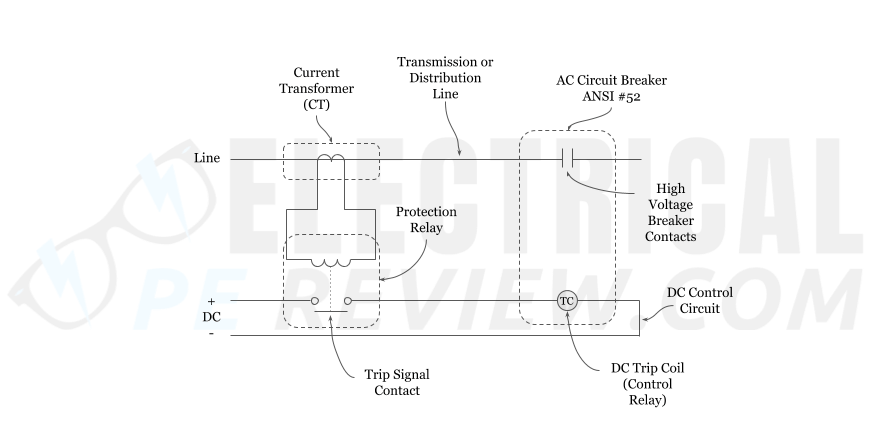
The absolute biggest surprise so far is that protection (Exam Specifications – IV.B. Protection) does NOT appear in the reference handbook. This is extremely surprising.
The most recent update to the electrical power PE exam specifications made in 2018 made the subject of protection the largest subject on the exam making up 13 approximate number of questions out of the total 80 questions. This means protection is 16% of the entire exam which is easily the difference between passing and failing.
The only information I could find even remotely related to protection in the 75-page reference handbook was a small number of ANSI device numbers and suffixes.
Unfortunately, Only 7 ANSI device numbers and 6 ANSI suffixes are listed in the reference handbook under chapter 3.1.6. Single-Line Diagrams. Compared to the total number of over 250 ANSI device numbers, descriptions, and suffixes this seems extremely lacking.
What about reference material on differential protection, distance relays, taps settings, pick up settings, time-current curve (TCC) graphs, coordination, time delay settings, inverse vs very inverse curves, damage curves, breaker settings, fuse ratings, zones of protection, back up protection, etc.
The lack of the largest subject on the electrical power PE exam appearing in the reference handbook just leaves me with more questions.
Was this somehow overlooked and just a mistake?
Does this mean the PE exam will only be testing on these device numbers and suffixes from now on? I doubt it.
Does this mean that the largest subject on the exam is going to be removed from the PE exam? Extremely unlikely.
Will Protection be included in future versions of the Reference Handbook?
3. Conclusion – Lack of Protection in the reference handbook
Unfortunately, only time will answer the question of why protection, the largest subject on the exam, was completely excluded from the reference handbook. In the meantime, don’t expect protection to go anywhere. It continues to be one of the most important and evolving topics in electrical engineering as more modern technology continues to influence microprocessor-based “smart” protection relays along with the emergence of smart and distributed electrical grids.
4. Electrical Power CBT PE Exam Reference Handbook Second Biggest Surprise – Codes and Standards
The second biggest surprise in the reference handbook is that there are no codes and standards included beyond the list of codebooks that are being tested on as found in the exam specifications.
After protection, codes and standards (Exam Specifications – I.C. Codes and Standards) is the second-largest subject on the exam with 12 approximate number of questions making up 15% of the overall PE exam.
If NCEES® does not allow outside references including codebooks, I’m not sure how they are going to expect to accurately test how well you know how to use each codebook.
It would be extremely unrealistic even for someone that uses each codebook daily as part of their job description to pass a test capable of asking any question pertaining to codes. Codebooks are just too large and detailed to memorize cover to cover.
Most codebooks can be viewed online for free at http://nfpa.org/freeaccess, maybe in addition to the reference handbook, NCEES® will have browser access to each of the codebooks.
4. Conclusion – Codes and Standards
Just like protection, the lack of codes and standards raises more questions than it answers. Will NCEES® allow codebooks to be brought into the exam? Will they supply digital copies similar to the reference handbook? Again, only time will tell but it would be extremely unlikely to imagine that NCEES® will test on codes and standards without codebooks. One of the main reasons for obtaining professional engineering licensure is to sign off on construction documents, so don’t expect the second largest subject on the electrical power PE exam to not be tested on.
5. Electrical Power CBT PE Exam Reference Handbook – Engineering Economics
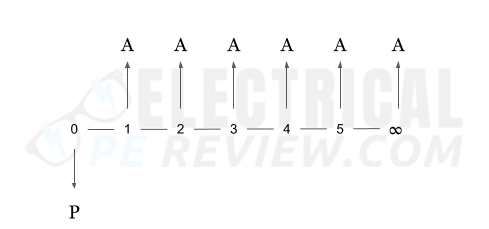
Engineering Economics (Exam Specifications – I.B.7. Engineering Economics) is listed as a subtopic of Applications under the main subject of General Power Engineering. Strangely enough in the reference handbook, it falls under General Engineering, which is a heading that does not appear on the exam specifications.
The reference handbook was generous to include interest rate tables for engineering economics, which greatly speeds up engineering economics calculations but remember you’ll likely only see a very small number of engineering economic questions.
Applications, the subject of General Power Engineering that engineering economics falls under has a total of 8 approximate number of questions out of 80, and there are a total of 8 subtopics within Applications, including engineering economics. If each subtopic is evenly distributed among the 8 approximate number of questions, that means on average there will be an extremely small number of engineering economics questions.
There is a large number of 8 out of the 75 pages in the reference handbook (10%) dedicated just to engineering economics which only makes up 1% of the electrical power PE exam.
5. Conclusion – Engineering Economics
Interest tables are great and speed up engineering economics calculations, be sure to know where to find them since they appear in a different section of the handbook compared to the specifications. Remember that there will only be an extremely small number of engineering economics questions.
6. Electrical Power CBT PE Exam Reference Handbook – Symmetrical Components
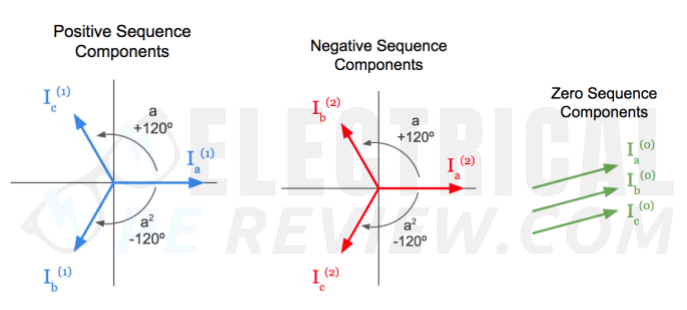
Symmetrical components (Exam Specifications – II.A.2. Symmetrical Components) is one of the most difficult and technical subjects on the electrical power PE exam. Surprisingly, there are only two formulas included in the reference handbook and they are given in matrix form instead of each formula being listed individually. Matrices are not really tested on the electrical power PE exam, so this seems overly difficult for an already challenging subject.
The two given matrix formulas are only for voltage and voltage sequence components. While the current and current sequence component formulas are identical, this could be extremely confusing for anyone not well familiar with symmetrical components.
The main challenge for solving symmetrical component problems correctly is knowing which of the different single-phase equivalent fault circuits to use depending on the type of fault since each fault has a different circuit model. Memorizing the different single-phase equivalent circuit models for each fault type is very difficult. For example, three-phase faults, double line faults, double line to ground faults, and single line to ground faults all use different single-phase equivalent circuit models.
Once the correct single-phase equivalent fault circuit is identified, the next challenge is figuring out which short circuit fault current formula to use since just like the circuit type, each fault type has a different formula for short circuit current.
6. Conclusion – Symmetrical Components
None of the symmetrical component fault circuits or short circuit fault current formulas are given in the reference handbook. This will make solving quantitative symmetrical components problems extremely challenging except for those that have a masterly level of competence in what is arguably the most technical subject that appears on the electrical power PE exam.
7. Electrical Power CBT PE Exam Reference Handbook – Instantaneous Functions, Average Value, RMS

Instantaneous functions are time-based sinusoidal functions with peak values like v(t) = Vpeak·sin(wt). These functions are typically associated with power electronics (Exam Specifications – II.B.2. Power Supplies and Converters).
Outside of this subject, peak values, average values, and using integrals to calculate the RMS values of instantaneous functions do not appear anywhere else on the electrical power PE exam.
However, surprisingly enough the reference material for these topics is grouped under Single-phase AC Circuits (Reference Handbook – 3.1.4. Single-Phase Circuits) in the reference handbook instead of power electronics (Reference Handbook – 3.2.2. Power Supplies and Converters).
7. Conclusion – Instantaneous Functions, Average Value, RMS
Another instance of material being located in a strange section of the reference handbook especially compared to the exam specifications outline. This could be confusing and make it hard to locate these formulas when solving power electrics problems.
8. Electrical Power CBT PE Exam Reference Handbook – Rotating Machines and Transformers
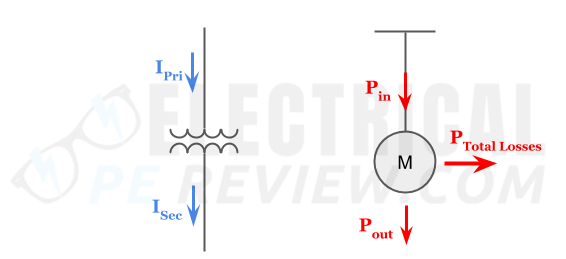
Rotating machines (Exam Specifications – III.A. Induction and Synchronous Machines) and transformers (Exam Specifications – III.B.1. Transformers) have historically been known as the source of the most difficult qualitative and theory-based question on the electrical power PE exam.
With 8 out of 75 pages in the Reference Handbook dedicated to rotating machines, and 7 out of 75 pages dedicated to transformers, expect these two subjects to continue to be extremely difficult in terms of qualitative questions since a combined 15 pages of the mostly formulas and definitions is no substitute for something like the 800-page Electrical Machines, Drives, and Power Systems by Theodore Wildi, which has been the gold standard for the electrical power PE exam for rotating machines and transformers.
Most of the quantitative questions for rotating machines and transformers can be solved with quick calculations, however, equivalent circuit problems for both can be extremely difficult if you are not well practiced including transformer and synchronous machine open circuit and short circuit tests, and induction motor and induction generator no-load and locked rotor tests.
The Reference Handbook is generous to include equivalent circuits for transformers, synchronous motors and generators, and induction motors and generators. It is also generous to include equivalent circuits for open circuit and short circuit tests of transformers.
However, the reference handbook does not include equivalent circuits for induction motor and induction generator no-load and locked rotor tests, and open circuit or short circuit tests for synchronous motors and synchronous generators.
8. Conclusion – Rotating Machines and Transformers
With just about zero information on theory included in the reference handbook for rotating machines and transformers, expect the qualitative theory questions for these subjects which are notoriously challenging to be even more difficult than they already have been in the past. Make sure you are familiar with the equivalent circuits not included in the handbook for induction motor and induction generator no-load and locked rotor tests, and open circuit and short circuit tests for synchronous motors and synchronous generators.
9. Final Thoughts on the new CBT Reference Handbook for the Electrical Power PE Exam
The electrical power PE exam is one of the hardest PE exams compared to any other discipline. The pass rates from the most recent exam was just 50% for first-time takers and 26% for repeat takers. This is the lowest pass rate compared to any of the other 22 PE exams!
Why is the electrical power PE exam so hard compared to the others? It is arguably one of the most technical exams in terms of subject breadth and subject depth for both quantitative math problems and qualitative theory problems.
The majority of the actual math calculations on the electrical power PE exam are simple and quick, but it requires the utmost nuanced understanding of how to correctly apply the formulas.
Examples such as simple mistakes with the square root of three, phase vs line values, complex number math in polar and rectangular form, the per-unit system, delta vs wye relationships, single-phase vs three-phase relationships, balanced vs unbalanced relationships, Kirchoff’s Voltage and Current Laws (KVL and KCL) for circuit analysis, complex equivalent circuits for transformers, rotating machines, symmetrical component faults, the list goes on and on.
NCEES® already has a lot of experience transitioning paper and pencil format exams to computer-based testing (CBT) environments. For one, they’ve already transitioned every single FE exam and numerous PE exams to the new CBT format before the electrical power PE exam transition. However, the concepts tested on electrical power PE exam may pose a greater challenge to NCEES® compared to any other PE exam.
Will NCEES® change the level of difficulty of questions to make passing the exam more realistic with only the reference handbook as the sole supplemental reference material?
If NCEES® does not change the types of questions they have historically tested on the electrical power PE exam then it is safe to assume that the exam will be much more challenging moving forward due to the lack of references that are no longer permitted to be used during the exam besides the extremely simple reference handbook that will be provided.
If NCEES® does not change the question difficulty, will they change their scoring methods so that the same approximate number of engineers pass the exam on average?
If the questions don’t change, scores will go down with the lack of references. If scoring methods don’t change, like introducing a bell curve, then the most difficult PE exam by pass rate (50%) will only become even more exclusive.
In the end, will the transition to the CBT format make passing the electrical power PE exam easier or harder compared to the traditional pencil and paper (PP) format?
We really will not know until enough engineers have gone through the CBT format and we’ve had a chance to look at the raw pass rate data.
10. How to Login to NCEES® and Download or Print the CBT Reference Handbook for the Electrical Power PE Exam
As of July 15th, 202, the correct steps to log into NCEES® to download and print a copy of the reference handbook is:
- Go to https://ncees.org/supplemental/launch-login/
Click on “MyNCEES” under Log in: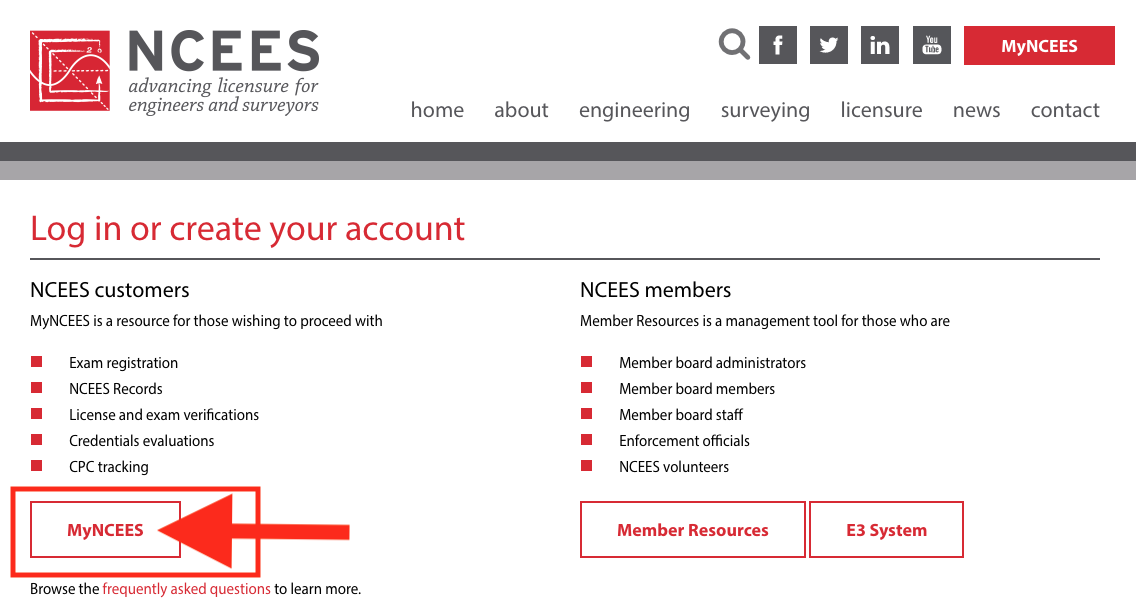
- Log in with your username and password:
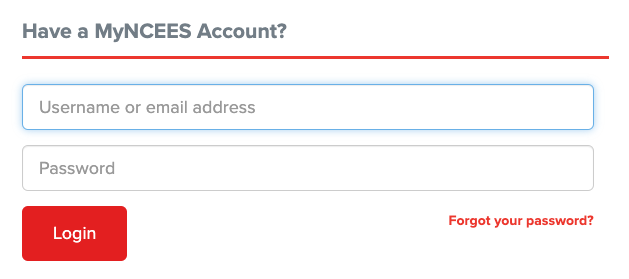
- Click on “View reference handbooks” under “Useful Documents” on the right-hand side:
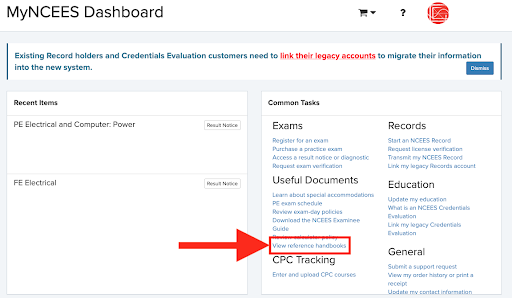
- Click on PE Electrical and Computer: Power Reference Handbook:
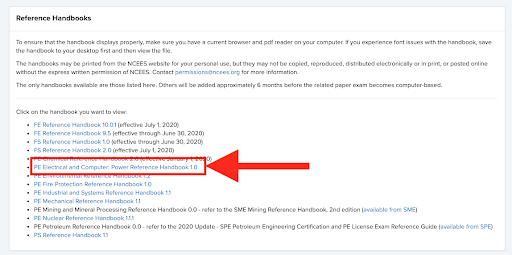
- The Reference Handbook will either download to your computer or the PDF file will be opened in a new tab in your browser window:
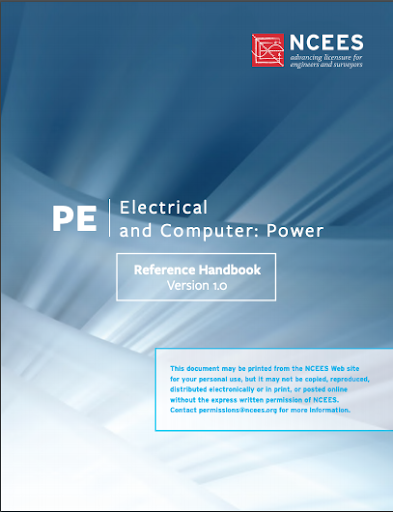
11. Useful Links and Additional Information Related to the New CBT Format for the Electrical Power PE Exam
NCEES PE Electrical and Computer: Power exam
NCEES exams transition to computer-based testing (CBT)
ELECTRICAL AND COMPUTER—POWER Exam Specifications
12. Questions, Thoughts or Comments on the New NCEES® Reference Handbook for the CBT Electrical Power PE Exam?
What do you think about the new reference handbook for the new CBT version of the electrical power PE exam?
Join the discussion by leaving a comment below!
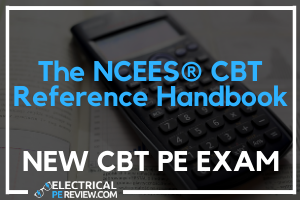
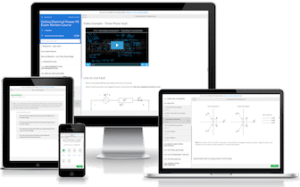
Do you think if I am taking the October paper and pencil exam it will be a good idea to print the reference book and have it available when taking the exam?
On one hand, it can’t hurt. It is a free resource after all so why not have it with you. Just remember that even if you have a few of the recommended reference books that you’ll already have much more information than what is limited in the reference handbook.
Here is a link for recommended references for the electrical power PE exam:
https://www.electricalpereview.com/recommended-references-resources-electrical-power-pe-exam/
I’ve seen other posts indicating that pdfs of the NEC, NESC, NFPA will also be available. Is that not that case? Also is there a possibility that revised exam specifications will be published for the CBT version?
Hi Katelynn,
So far NCEES has stated that they will be providing PDFs for all codebooks that have questions appearing on the exam when you take it which is a relief!
Hi Zach. Thanks for the great post. With the current COVID climate and the increasing number of infection cases, I just don’t see NCEES going forward with the October in-person exam. Any thoughts or plans for the upcoming course if they were to cancel it in the middle of the class just like in April?
Hi Michael, it’s too soon to know for sure if it is going to be canceled. With airlines still flying and kids going back to school in some states, I’m hoping that they will not cancel it. Typically the exam room is big enough to allow for plenty of social distancing. If they do cancel the exam we will make decisions when that time comes just like last semester but for now, we are moving forward.
Hey Zach, NCEES has come out with the 2021 Exam Specifications. See the link below:
https://ncees.org/wp-content/uploads/Power-Jan-2021_CBT.pdf
Protection is in there. Maybe since those questions are more qualitative in nature there wasn’t much they could include in the Reference Handbook. I was supposed to take it in April but hopefully will still be able to take in October.
Hi Ryan,
You got it, protection is still on the specifications and still the largest subject on the exam in terms of number of problems to expect. The specifications did not change even when the exam transitioning to the new CBT format.
Zach,
There was talk a couple of years ago from the NCEES Circles that Engineers should were be viewed more like doctors and lawyers going forward. The thinking being that we call ourselves “Professional” Engineers. That was fair thinking – but then The Circle started talking about an upcoming requirement for electrical engineers to having to have a Masters Degree (instead of the current ABET qualified BSEE) requirement to sit for the NCEES Exams. Let’s be honest, with a 50% pass rate one has to start wondering if that is what is missing from ones collective toolbox. The reason that this is being shared with you and our fellow classmates is that this new exam format plays back into this conversation. A reason that only 75 pages in reference is all that is given is that would be all the NCEES would need to provide if an assumption was now made that the test taking candidate should be fully prepared – Master’s Degree and all. The NCEES can now switch gears and provide an “Application Style exam and provide just the formulas and examples needed since we now have the assumed theoretical masters background. These are scary thoughts that should not be shared on this site if they are not facts; however, the talk has been out there and the wording (for the State of Florida) does speak to qualifications to help meet the 4 year exam taking requirement being lessened by use of a Masters Degree. Note, when personally queried the licensing board (for Florida) communicated “Must be a Masters in Engineering – having an MBA would not have any bearing”. What we do know as a fact is that we are all probably greater than 68% prepared to pass this October’s exam in its current format – so Zach, with your help . . . let’s get the additional 10% or so that we need to pass and utilize that knowledge attained. Now!
NCEES does not determine the requirements for licensure, each individual state board does. Though similar, it tends to vary a little state by state. NCEES makes the test, scores the test, reports the scores to each state board, and oversees the proctoring of the test.
I really doubt that a master’s in engineering will ever be a licensure requirement. Only a small percentage of engineers (much smaller than licensed engineers) get their masters. Making that a requirement would greatly reduce the number of PEs every year and only hurt the industry. Each state board would also have to deal with the number of licensed engineers that do not have their master’s degree, are they just grandfathered in? There would be a lot of protest.
A lot of engineers choose to get a PE over masters degree due to less of a time commitment and generally most employers regard a license higher than a masters.
If a masters were ever to come into the conversation, I could see some state boards allowing it to be used as an FE waiver, as some states currently do with a PhD in engineering.
I don’t think the FE should even be necessary for the PE. If one went to an ABET college, that should be enough; if not, the yes require the FE. For those of us with 10+ years of experience who didn’t take the FE just out of college, it’s a major ordeal to have to go back and take that test if the state requires it for a PE. Thus this requirement also reduces the number of PE’s. We should be able to just focus our energies on the PE exam and that should be more than sufficient to weed people out.
I think the purpose of the FE exam is to test your overall college-level education instead of making a certain GPA threshold a requirement since once you graduate, you can’t change your final GPA.
The FE exam in some ways can be more challenging than the PE exam, especially for someone in the power field that has been out of school for a while. The majority of the FE exam tests on electronics. Not the electronics of sizing a UPS or the application fundamentals of the inner workings of a VFD that a power engineer would need to know, but instead solving MOSFET and BJT circuits, or dealing with digital logic circuits with AND and OR gates.
The FE exam closely matches my ABET engineering degree curriculum which power was also an extremely small part of, but neither really match my experience in the field. However, the PE exam does.
My understanding is that the ABET-accredited electrical engineering degree is supposed to prepare a college graduate for any field in “electrical engineering” like wireless communication, digital circuit design, analog circuit design, microprocessor design…. and power.
However, it really is just the power industry that really requires the PE license for regulatory purposes, and the volume of test-takers support that if you look at the numbers for electronics, computer, and controls engineering PE exams.
I think there should be a specific power engineering college degree instead of the swiss army knife of all the electrical engineering related fields which is the ABET-accredited degree is in my opinion. Imagine what you could learn in a four-year undergrad program focused just for power engineering. It would be incredible. Every engineer would come out of the gate knowing how to do arc flash studies, short circuit calcs, how to size any kind of OCPD and conductor to code, they’d already be trained on safety and construction estimating. It would be a beautiful thing. Everything I learned about electrical power engineering, started the day after I graduated, sweating in the field listening to someone older than me. Sometimes at three in the morning when something went wrong.
The only downside to this that a lot of electrical engineers don’t know they want to be in power until after they graduate. I was one of those engineers.
Zach,
Great points!
The best time to plant a tree is . . . ?
5 Years ago of course.
The same is true of our professional credentials – the sooner we have them in hand the better. Very much looking forward to taking this October’s PE Exam as there is no time like the present with the test changing to a new format for 2020 that will certainly create ever increasing challenges for all of us. You were spot on with your counsel of taking advantage of “early as possible” registration as Florida has already closed down the Orlando Testing Center for any additional test takers – trying to maintain distance will definitely have an affect on our testing locations. Luckily for those that might have missed this opportunity, Florida 3 has other sites; however, one does not want to put this off any longer. Feeling like the newly proposed testing format is going to help in some ways (testing availability) and in other ways it might be speaking to other changes that have been proposed in our industry in the last few years as we steer away from the more technical & tactile pencil and paper exams. So in summary: sign up for Zach’s upcoming class August 4th, sign up for the PE and sign up for your chosen testing location and of course – Charge On!
https://www.usnews.com/education/best-graduate-schools/top-engineering-schools/articles/2014/03/17/mandated-masters-degrees-could-change-the-engineering-game
Great points all around, I am completely in agreement with you. Also, as a man of aphorisms that it a great one. Will be using in the future! Thanks for sharing.
Hi Zach,
Do you know anyone who has ever used
engineering economics in actual practice? In my 25 years of engineering in and around electric utilities, I’ve never heard of anyone using it, and have never read any IEEE articles or papers on it. For the PE it just seems like big distraction and waste of time and space, especially if it takes up 10% of the handbook. Engineering economics seems to have more to do with accounting and little to do with the ability to design electrical circuits and equipment safely and reliably, which I thought was the major purpose of licensure. Why not just let us focus on the meat and potatoes of EE?
To be honest, no, I’ve never known anyone to ever use it. I’ve known the accounting department of large firms and companies to be involved in discussions of which capital projects are approved for specific fiscal years based on cost, expected return, depreciation, etc, but I’ve never known anyone in an engineering position to use engineering economics. Engineering economics was part of my ABET undergraduate degree program and it seemed really unrelated to anything else we learned in the program as well. Like you, I am not sure why it is considered important knowledge to be tested on the PE exam.
However, on a personal level, it has been great knowledge for double-checking the bank’s amortization schedules, doing quick investment approximations for retirement accounts, and generally catching others off guard!
Zach,
Thanks for writing this article! I discovered when I went to register for the October exam recently, that the pencil and paper was no longer available and that they had transitioned the exam to CBT format sooner than planned. Talk about the shock of the century! I’m curious to see how preparation for the exam will change, as we can no longer bring in our library of power books. I was not aware that we could access the handbooks online. While I don’t relish the thought of navigating a digital copy of the NEC, something is better than nothing. After all is the exam testing memorization skills or engineering and adaptation skills? For those of us who don’t have photographic memories, engineering skills it is! Heaven help us all haha. Thanks for all your content! Best wishes to all!
I believe the second link in section 11 of this article should be replaced with the following.
https://ncees.org/pe-electrical-and-computer-power-exam/
Thanks for the heads up, Josh! It looks like NCEES® deleted that page and the announcement is no longer available for viewing. I’ve updated the links including the links to the specifications. Hope your studying is going well 👍
thanks dear for the great note
I just noticed that complex imaginary refuses to sell their books for buyers out of USA. this is a crazy policy and has no justification.
Zach;
Here we are now into October and we know that paper/pencil exam has been cancelled as well. Do you have any new thoughts on the Power CBT format/question type possibilities given the NCEES ref. manual and their latest practice exam publication for CBT?
If you are referring to AIT questions, they are nothing to be afraid of. Anyone that prepared enough to pass the paper and pencil format would have no trouble answering AIT based questions.
who gonna take the exam on early Dec ?
How have you adapted your courses to account for the change of the exam to be the CBT? I watched your intro video but it talked about printing items to bring to the exam, which you can’t do anymore. I want to subscribe to your course to help my preparation for the exam but I need to know that you’ve adapted your materials for the changed examination type. The exam questions have surely changed to only rely on materials in the handbook – have you changed your problem solving methods in response?
Hi Anna, we updated our entire live class material in August 2020 when the change to the CBT format was first announced. To my knowledge, we were the first provider to do so. Since then, we have already taught and updated the entire new CBT semester curriculum a total of three times.
We constantly update our material to stay abreast of any changes and the new CBT format is no different.